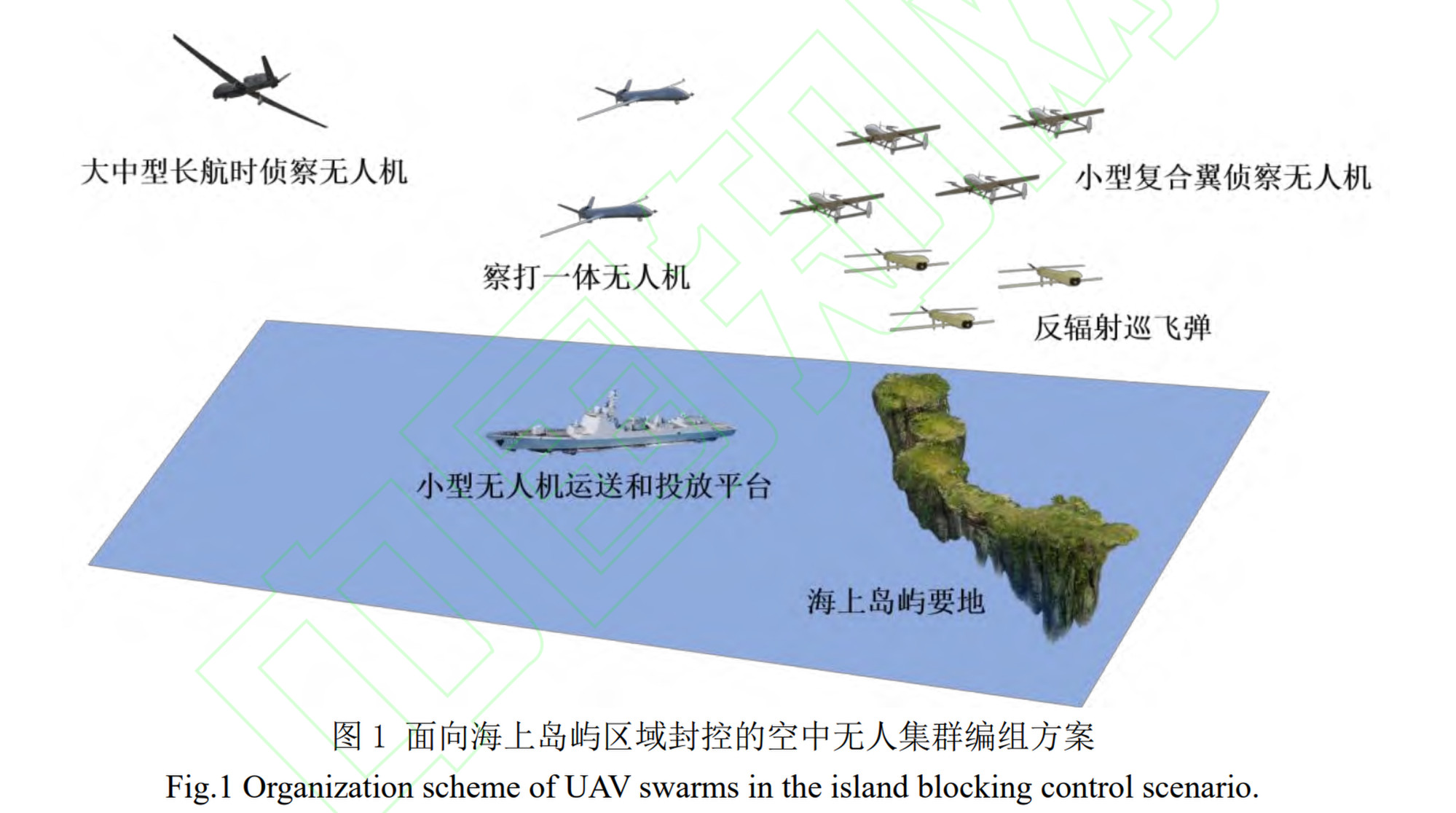China’s military has the ability to impose and maintain a blockade on an island solely with drones, according to a study released by the People’s Liberation Army (PLA) last month.
Meanwhile, drones are also the key to America’s latest plan for a military intervention over the island of Taiwan – a drone-only strategy dubbed “Hellscape”.
“Area blockade and control stands as a typical application scenario for drone swarms in military operations,” the project team led by Chen Huijie, an engineer with the 92116 unit of the PLA, wrote in a peer-reviewed paper in the Chinese academic journal Command Control & Simulation published on June 5.
Outcomes of the “mission-level simulation verification conducted for aerial unmanned clusters in conjunction with an actual combat mission” have rarely been disclosed before due to military sensitivity, Chen’s team said.
The objective of the combat mission outlined in the paper was to form a blockade and control an unnamed island with a narrow shape similar to Taiwan’s terrain. In the scenario, the island was fortified with a large number of air defence missile launchers, while hostile warships and submarines prowled the surrounding waters.
“Given the presence of widely dispersed, highly concealed and time-sensitive mobile threats on the island and its adjacent waters, employing traditional manned forces for reconnaissance and assaults poses a challenge of low cost-effectiveness,” Chen’s team wrote.
“On the contrary, unmanned equipment offers advantages including expendability, low cost and minimal casualties. Integrating unmanned clusters into a systematic war is anticipated to speed up the reconnaissance, identification, decision-making and attack cycles, consequently boosting overall combat efficacy.”
In the simulation, the PLA employed four types of drones. Large and medium-sized drones, with good endurance as well as reconnaissance-and-attack capabilities, were launched from mainland Chinese military bases. Their duty was to “operate in all weathers, achieving prompt detection, identification and strikes against mobile threats”.
Then PLA naval vessels deployed small composite-wing reconnaissance drones to conduct close observations of concealed targets, and anti-radiation patrol drones to eliminate enemy radars.

After numerous simulated battles, Chen’s team discovered that deploying more or higher-performance drones did not necessarily yield better results. Within a combat grid area, once the scale and diversity of drone formations reached a certain threshold, they could effectively control the island and its surrounding waters, suppressing the island’s armed forces and thwarting external aid.
“Further increasing the number of patrolling drones will enhance combat capability, but the change is not significant,” the researchers wrote.
Chen leads the testing and evaluation of unmanned systems and their operational use at a military base in the coastal city of Huludao, Liaoning province. This research was assisted by the National University of Defence Technology and Tsinghua University.
“The analysis and evaluation of simulation results can unveil the deficiencies of combat scenarios and even combat methods, thereby further refining combat issues and the design of combat scenarios,” the researchers said.
They also intend to verify the results of the simulation in the real world.
“A warfare strategy divorced from actual troop experimentation can ultimately only be empty talk … a castle in the air,” Chen wrote.
But while China has been testing its drone-only combat plans, the US military last month revealed its own blueprint to use swarms of drones in the Taiwan Strait, in a strategy dubbed “Hellscape”.
These drones are intended to counter any attempt by the PLA to land on Taiwan, thereby sparing US casualties.
“I want to turn the Taiwan Strait into an unmanned hellscape,” Admiral Samuel Paparo, head of US Indo-Pacific Command, told The Washington Post in an interview published on June 10.
Though the US military’s drone warfare methods and capabilities remain classified, Paparo said that under the Hellscape plan, the drones – both in the air and in the water – would “make their lives utterly miserable for a month, which buys me the time for the rest of everything”.
“I can’t tell you what’s in it. But it’s real and it’s deliverable,” Paparo said of the plan.
Chinese defence ministry spokesman Senior Colonel Wu Qian denounced the US strategy as “crazy and inhumane”.
“Those who clamour for turning others’ homeland into hell should get ready for burning in hell themselves,” he said in Beijing last week.
China is a global leader in drone manufacturing technology and capacity. Bloomberg reports that Chinese drones account for 90 per cent of the consumer market and 70 per cent of the industrial market in the United States.
According to a Wall Street Journal report in April, Chinese drones have shown superior performance compared to American drones during battle in Ukraine.
But the US military says that thousands of drones in the Hellscape plan would be sufficient to deter the PLA.
“My job is to ensure that between now and 2027 and beyond, the US military and its allies are capable of prevailing,” Paparo said.



